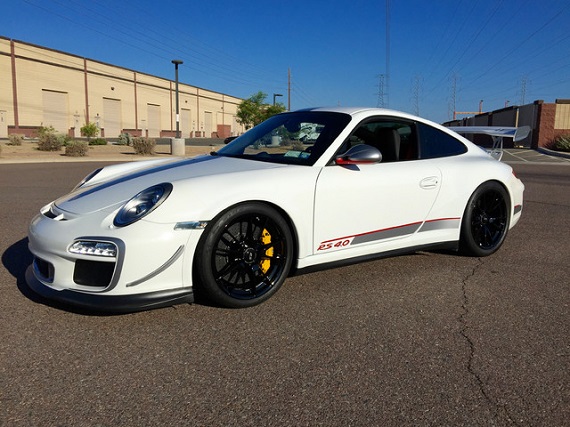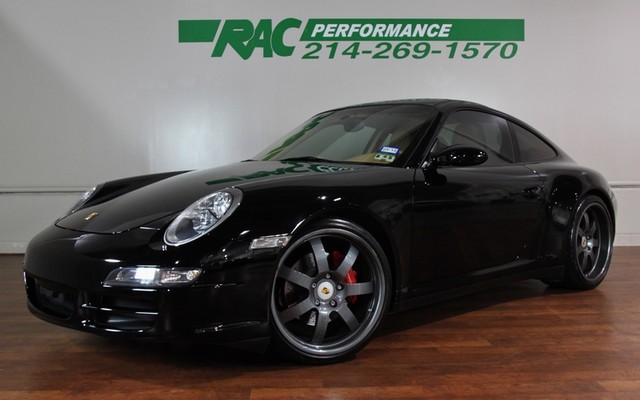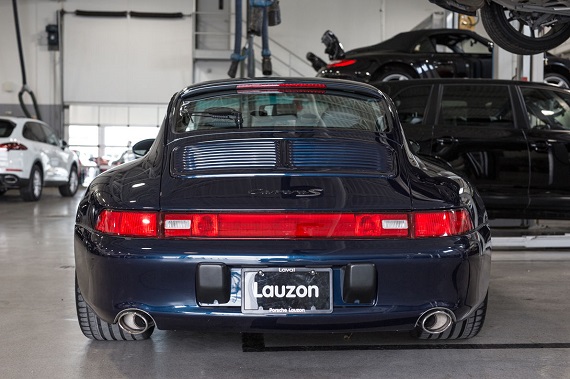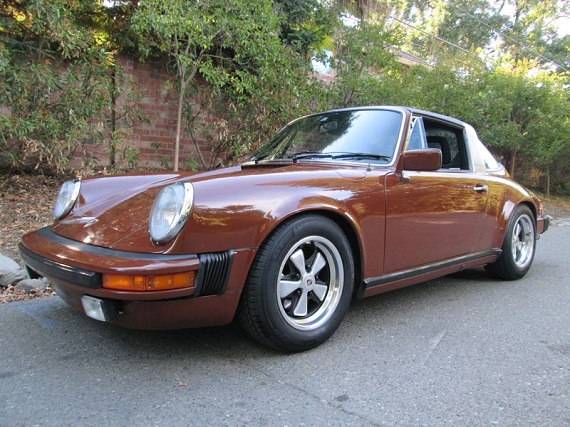Any ultimate 911 will be highly coveted. But when that ultimate 911 was never expected to be produced and happens to be a version that followed upon multiple variants of the model, then we really begin to step into rarefied air. For its homologation purposes Porsche released its first GT3 RS as part of the 996 model line. Those cars were never available in the US market so when it was announced that the 997 GT3 RS would make it to our shores, there was much rejoicing. But Porsche was restless and the 997 GT3 RS would see not one, not two, but three separate versions showcasing increasing displacement and further lightening. These began life with a 415 hp 3.6 liter flat-six, which two years later was replaced with a 3.8 liter flat-six producing 450 hp. It was assumed that would be the end and yet very late in the 997’s model life whispers began about one more version: a 4.0 liter flat-six pushing 500 hp. The numbers seem impossible. 500 hp from a relatively small package all directed to the rear wheels and all without the benefit of forced induction. This is truly engineering excellence.
Tag: Porsche
Tuned cars from the 1980s were never particularly discrete, nor were they cheap or easy to come by. Tuners like Treser, in an effort to get more power out of the notoriously non-tunable CIS injection system that adorned nearly all German cars in the 1980s, got creative by taking a 928 fuel distributor for the V8 motor and sticking it on the inline-5 turbo unit. Others, like AMG, took the biggest motor they could build and stuck that into a bunch of different cars. Ruf turned up the boost on the 911 range by moving the turbocharged flat-6 into narrow-body cars. But none of this came cheaply, nor were these tuned cars always the most reliable. When it came to the period of electronic fuel injection, though, things started to change. The first chip-tuned cars also had some bad habits; my father’s chipping 944 Turbo, for example, runs quite rich and if you engage the cruise control, the computer believes you want to go 170 m.p.h. and plants the throttle wide open. But they’ve become increasingly reliable and almost a given; plus they’re cheap. On a car like my 1.8T Passat, you can get a reflash of the ECU with programmable modes for around $500; it can be done in just a few moments, and adds somewhere in the vicinity of 50 horsepower and 80 lb.ft of torque. As such, if you really want to go wild in a tuned car these days, simply changing the ECU to a hotter map isn’t enough. No, if you’re someone like Ruf, you’re still pushing the bounds – or, perhaps, compressing them:
CLICK FOR DETAILS: 2006 Porsche 911 Carrera 4S Ruf Kompressor on eBay
1 CommentNarrow body versus wide body. Porsche has been pretty good about making both available, especially on their modern cars now that the popularity of each has been well established. The narrow body evokes agility and lightness while the wide body commands respect and hints at the prodigious power and ability of the machine. First found on racing 911s and then made commonplace by the 911 Turbo the wider rear of those cars was more of a necessity manifested by the nature of a high-power rear-engine rear-drive car. With time it became available on non-turbocharged 911s as part of the Turbo-look package before finally becoming a staple of certain models in general. For me the wide-body reached its peak beauty with the 993. That doesn’t mean it’s my favorite, but I do find these to be the best looking of any wide-body Carrera I’ve come across. First available under the guise of the Carrera 4S, that wider curvier rear fills out the 993’s shape and brings perfection to the design. For the final two model years Porsche then made available the Carrera 2S, giving buyers the option of that wider body but while retaining the standard rear-drive layout. Produced in relatively small numbers they’ve proven quite popular on the second-hand market and look sure to continue that success over the coming years. The example we see here is an Ocean Blue Metallic 1997 Porsche 911 Carrera 2S, located in Quebec, with 17,983 miles on it.
CLICK FOR DETAILS: 1997 Porsche 911 Carrera 2S on eBay
2 CommentsEven though I’m very familiar with it I still find it somewhat jarring to look at the market for a 1974 Porsche 911S versus a 1973 911S. The reasons are all fairly clear: the new design with impact bumpers remains less appealing to many collectors and the engine suffers from too many restrictions necessary to meet the more stringent emissions requirements of the day. With time I can’t help but wonder how much that gap will close. A recent article on the 911 market has suggested that as collectors become increasingly likely to have been born after the introduction of the impact bumpers then the first issue will become less of a hurdle for these cars to overcome and we could then see those values rise. Obviously, that may never be borne out and the engine will always be what it is. But we do frequently hear from owners of the mid-year 911 that when maintained properly they can make for excellent machines just as any 911 does. And at the moment some of them can come at quite a discount. The example we see here is a Bitter Chocolate 1974 Porsche 911S Targa, located in Sacramento, with 146,604 miles on it and on offer with no reserve.
CLICK FOR DETAILS: 1974 Porsche 911S Targa on eBay
Comments closedThis car doesn’t exist. Or I should say, this model doesn’t exist, since the car clearly does. Porsche never officially produced a 911 Turbo Cabriolet for either the 964 or the 993 models and while such minor inconveniences as non-existence rarely dissuade certain well-heeled Porsche enthusiasts from asking the factory to make one anyway, this car has not come about through those means. Rather this one came about through many hours of labor and a thorough dip into the Porsche parts bin by an owner who simply wanted to improve his 911. Earlier this week Carter presented another take on how someone might arrive at a 993 Turbo Cabriolet and while that car’s development appears to have been somewhat, shall we say, unfocused, this build seems well thought out and carried out with a good deal of care. For starters, it began life as a 1995 911 Carrera 4 Cabriolet, which makes for much better starting material than a 1977 911S Targa. Add in a 993 Turbo engine, widened rear bodywork, upgraded suspension, Turbo brakes, wheels, and sport seats and you have something fairly comparable to how we’d have expected a 993 Turbo Cabriolet to look and perform had Porsche chosen to produce one. With more than 124K miles on the clock this isn’t a garage queen only shown at special events, but rather an enthusiast’s dream made reality that is frequently enjoyed.









